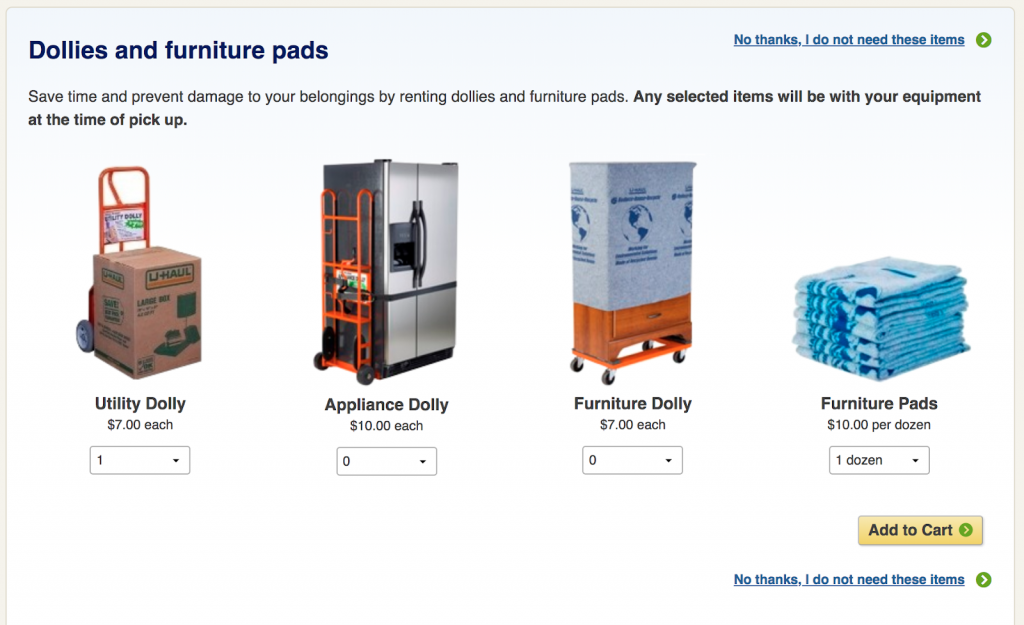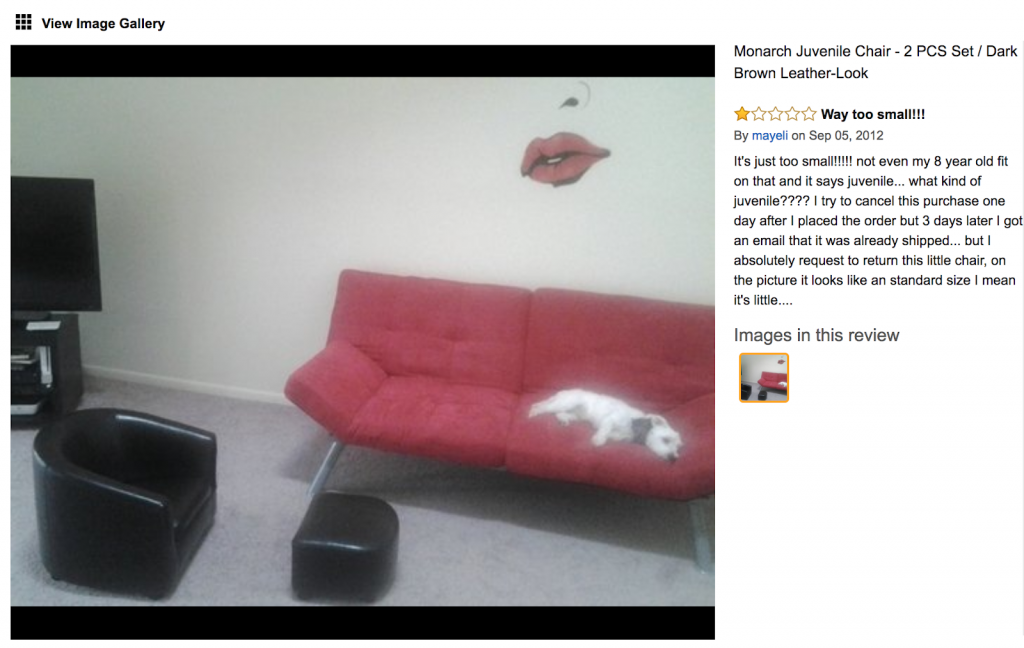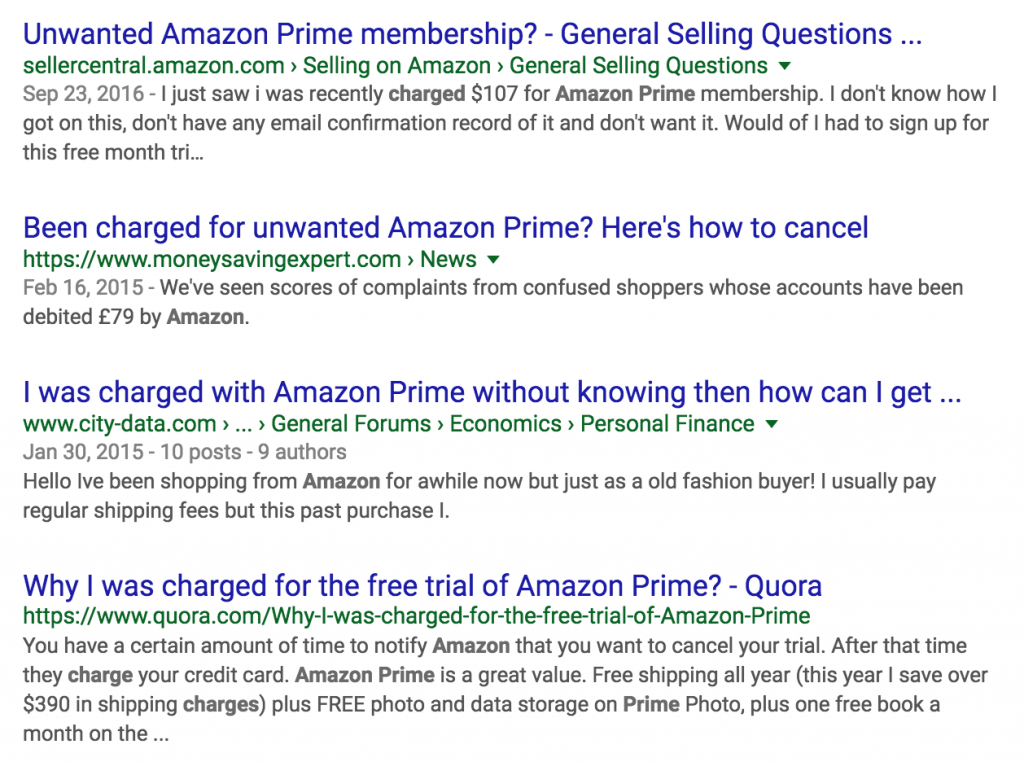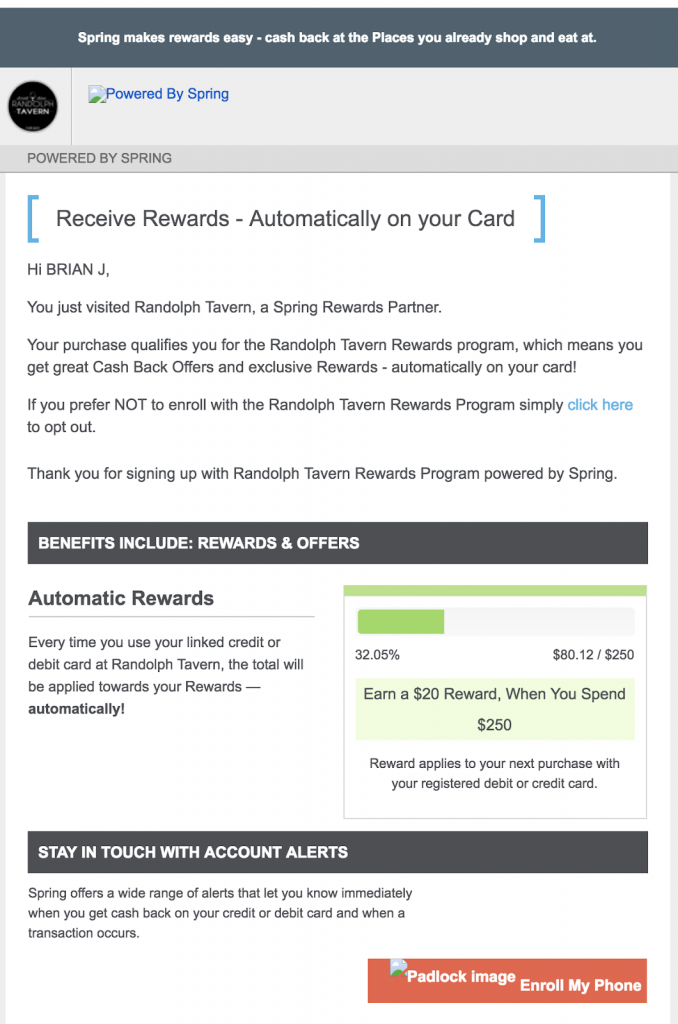
eCommerce Dark Patterns
What are Dark Patterns?
Dark patterns are user interface components that trick visitors into making decisions that benefit the business behind the site. Basically, they’re the things that make you go, “Wait, I didn’t ask for that!” once you realize what’s happened.
Dark patterns are found all over the web and are especially problematic on eCommerce sites where money is changing hands. In this article, we’ll look at several types of dark patterns to highlight this issue and hopefully keep you (and other shoppers) from falling into these digital traps.
Misdirection
The first dark pattern we’ll look at is misdirection. This is a very common tactic that can be found on the web. Essentially, misdirection is when a site uses the size, color, and placement of page elements to direct the users’ attention away from unfavorable interactions. Here’s an example from the U-Haul site:

This unskippable page is part of the truck reservation process. The user is distracted from the small blue “no thanks” link by the big yellow “add to cart” button – if you didn’t know better, the most obvious way to proceed to the next step would be to add these items.
At the same time, this is a great example of another dark pattern: Sneak Into Cart. Here, the dolly and furniture pads have their quantities set to 1 on page load. Clicking “Add to Cart” will add $17 to the order with no confirmation.
These tricks take advantage of the fact that users scan pages rather than read every piece of text. They use large fonts and bold colors to grab the eye while underplaying other less profitable options.
How to Stay Safe: Shoppers should slow down, take their time, and pay close attention to what a site is telling you if you want to avoid unwanted and unnecessary charges.
Price History
Sale pricing is one of the primary ways eCommerce sites boost their conversion: people are much more likely to click “buy” when they think they’re getting a good deal. Knowing this, some retailers will try to pull a fast one on consumers by increasing prices before a big sale or busy shopping season. That way, when the sale arrives, shoppers assume they are getting a deal, while in reality, they’re getting a discount on an overpriced product.
For informed consumers, there are several tools dedicated to tracking price history so you can be sure you’re actually getting a good price.
![]()
How to Stay Safe: The site camelcamelcamel.com will show you the price history of an Amazon product url over time. Other good price tracking tools include Slickdeals and Invisible Hand. Avoiding this dark pattern requires a bit of extra work, but is well worth the effort, especially when it comes to big purchases. It can also help you build a list of sites and retailers to avoid.
Misrepresentation
One downside to shopping online is the inability to physically interact with whatever it is you’re shopping for. All you have to go on is the information provided on the website. This allows some online retailers to use page layout, product imagery, or copy to misrepresent the function, size, quantity, or contents of the product being sold. This type of scam is common on sites like Craigslist, Amazon, and eBay, but it pays to be careful on any site.

How to Stay Safe: Always read the full description and specifications for the item. Pay attention to user reviews if they’re available. If it seems too good to be true, then it probably is.
Roach Motel/Forced Continuity
Roach Motels are designed to trap the customer. They make it easy to get into a situation beneficial for the business, and difficult or impossible to get out. This can include things like mailing lists, subscription services, or loyalty programs.

One famous example of this is the Amazon Prime service. Customers can try the free shipping/media service for 3 months. While signup requires a credit card, it isn’t made clear that the service will continue and in order to prevent being charged, it’s on the user to opt out. This is another specific dark pattern called Forced Continuity.

How to Stay Safe: The lesson here is to always be wary when signing up for something free, especially when they require a payment method up front.
Even with a healthy dose of caution, it can be difficult to avoid roach motels. For example, even I was automatically enrolled in a rewards program just for using my credit card at a restaurant.

Very frustrating, but at least they made it possible to opt out from the confirmation email.
Conclusion
eCommerce is about convenience and speed, causing people to rush through their orders. Dark patterns feast on this mentality. The best step to avoiding the pitfalls featured here is simply knowing that they’re out there. The second step is slowing down, taking your time, double checking, and reading instead of scanning. These habits can be tough to formulate, but in the long run, they’ll save you time and money.
